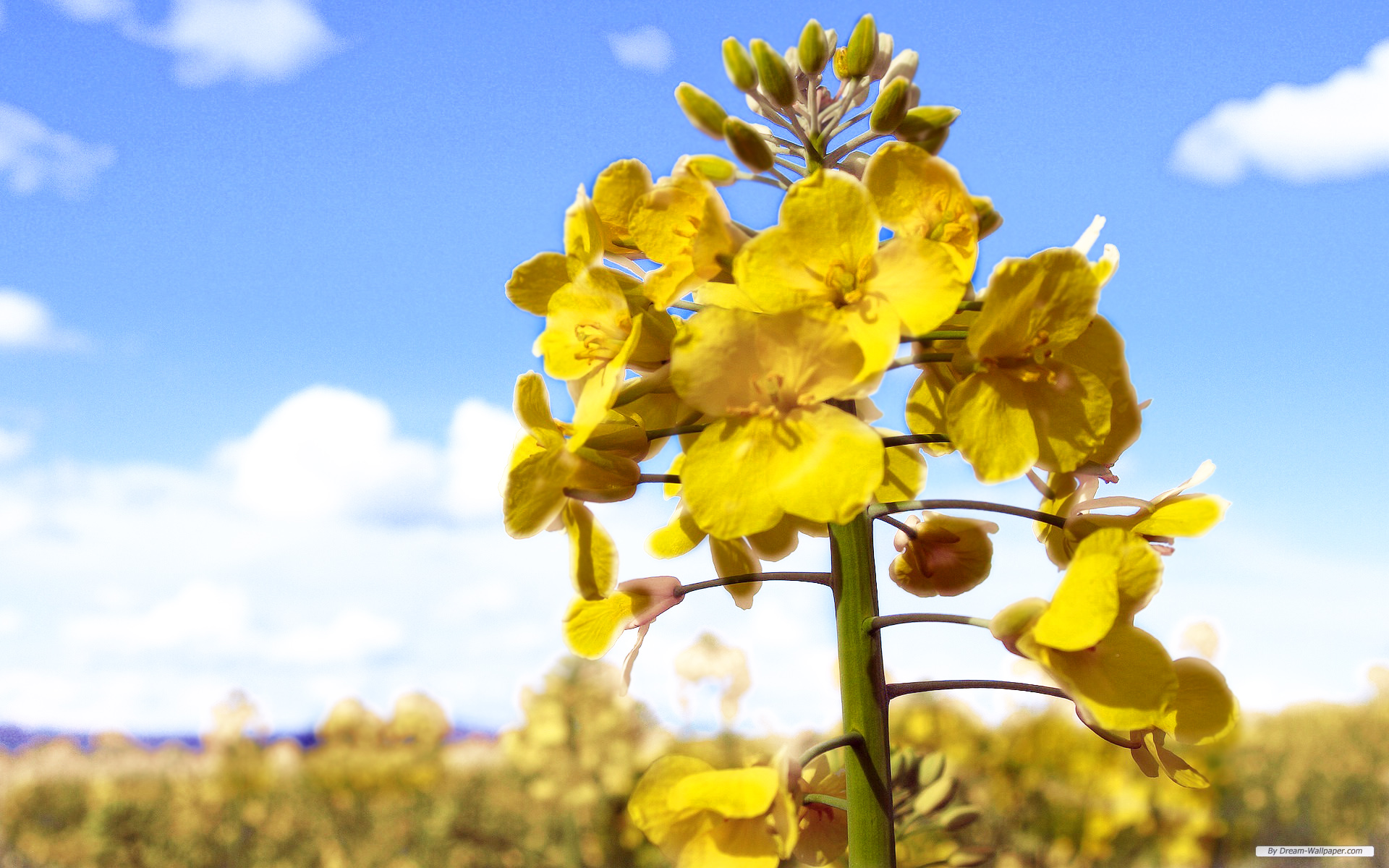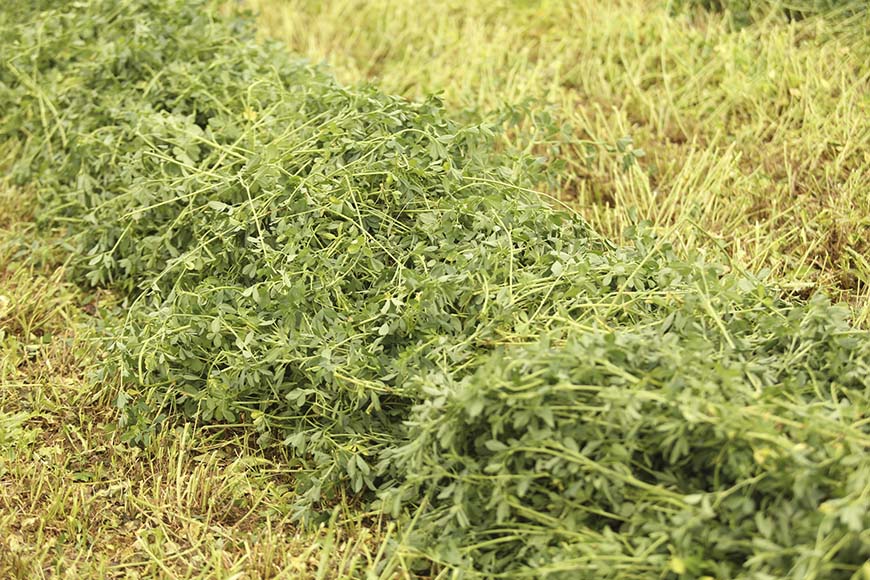Limiting Harvest Loss Helps Optimize Canola Profit and Reduce Volunteer Canola in Wheat

Limiting Harvest Loss Helps Optimize Canola Profit and Reduce Volunteer Canola in Wheat
Dennis Christie
Agronomist
Yukon, OK
Following a harvest strategy is essential to realizing optimal yield potential, whether you produce spring canola or winter canola. But it also helps position your fields for the subsequent wheat crop. A timely harvest limits pod shattering, which in turn reduces the amount of volunteer canola that will sprout up in your wheat crop next year.
The first step in achieving a well-timed harvest is taken at planting. By spreading the maturity of your canola crop across your acres, you ensure that it won’t all be ready to harvest at the same time.
A solid harvest plan is key to execution. By preparing for different field conditions and weather scenarios at harvest, you’ll be ready for whatever Mother Nature throws at you. If you grow winter canola, take the opportunity to review your harvest plan when your crop is dormant. Canola harvest methods include:
When harvesting your crop, keep close tabs on your losses out the back of the combine. Approximately 115 seeds per square foot on the ground equals a 1 bu/A loss. Review the operator’s manual for your combine and make sure you’re within the right settings for canola. If the combine isn’t adjusted properly, farmers can lose up to 5 bu/A or more.
If losses continue after making adjustments, check for holes and cracks on the pickup, feeder house, elevator, shoe seals, separator covers and the grain tank.
Travel speed can also contribute to seed loss. Going too fast can overstretch the combine’s capacity, while going too slow can result in overgrinding straw to the point that tiny pieces fall into the sieves, reducing air flow and separation. Both of these mistakes can reduce profits and increase the amount of volunteer canola you need to deal with when rotating back to wheat.
Incidentally, there are many good approaches that can be taken when removing volunteer canola from your wheat stands. We recommend consulting your local agronomist to determine the preferred method for your fields. Whichever you choose, confronting volunteer canola early will provide the best results.
Once you’ve harvested your canola crop, continue to make the most of the rotation by performing soil tests across your fields to get a handle on your pH and fertility levels going into wheat. And remember, don’t just select last year’s yield winners when deciding which wheat varieties to plant after canola. You never know how growing conditions will change from one year to the next. Instead work with your locally owned and operated WinField® United retailer to review Answer Plot® yield data and your own harvest results from the past few years. Base your selections off of which wheat varieties performed best across a variety of conditions and manage your crop using the best management practices for that variety.
© 2020 WinField United. Important: Before use always read and follow label instructions. Crop performance is dependent on several factors many of which are beyond the control of WinField United, including without limitation, soil type, pest pressures, agronomic practices, and weather conditions. Growers are encouraged to consider data from multiple locations, over multiple years, and be mindful of how such agronomic conditions could impact results. Answer Plot®, CROPLAN®, InterLock® and WinField® are trademarks of WinField United.
Dennis Christie
Agronomist
Yukon, OK
Following a harvest strategy is essential to realizing optimal yield potential, whether you produce spring canola or winter canola. But it also helps position your fields for the subsequent wheat crop. A timely harvest limits pod shattering, which in turn reduces the amount of volunteer canola that will sprout up in your wheat crop next year.
The first step in achieving a well-timed harvest is taken at planting. By spreading the maturity of your canola crop across your acres, you ensure that it won’t all be ready to harvest at the same time.
A solid harvest plan is key to execution. By preparing for different field conditions and weather scenarios at harvest, you’ll be ready for whatever Mother Nature throws at you. If you grow winter canola, take the opportunity to review your harvest plan when your crop is dormant. Canola harvest methods include:
- Direct combining: Also known as straight cutting, this is a method that has become more popular in recent years, but it’s most successful with a weed-free and uniform crop. This option isn’t for everyone, as it requires you to leave your crop in the field longer (although plant desiccation is an alternative). This could expose your canola to wind or storm damage, which can lead to increased shattering and seed loss. Poor weather or wet fields at maturity could delay harvest, allowing shattering to begin. If you choose the plant desiccation route, follow all label requirements and use InterLock® adjuvant to improve coverage and get more meaningful droplets into the canopy.
- Swathing: This recommended practice consists of cutting down canola in windrows before it completely ripens, leaving the plants to ripen on the ground. Canola has reached its highest yield potential and is ready to swath when 60 percent of the seed exhibits a tiny brown or black spot on the mostly green seed. Swathing is normally a good way to manage against seed loss, although late season hail can damage pods and increase the risk of shattering.
- Pushing: Considered by some farmers to be a faster and less expensive alternative to swathing, pushing consists of mounting a “pusher” on your tractor’s three point hitch and driving through the canola at 5 to 10 mph to force uniform lodging. Pushing canola over makes it is less susceptible to wind and shatter losses because the canopy layer is denser. After the crop naturally matures, it is direct combined in the opposite direction of the pusher. Harvest should be taken slower, however, because more stalk material enters the combine.
When harvesting your crop, keep close tabs on your losses out the back of the combine. Approximately 115 seeds per square foot on the ground equals a 1 bu/A loss. Review the operator’s manual for your combine and make sure you’re within the right settings for canola. If the combine isn’t adjusted properly, farmers can lose up to 5 bu/A or more.
If losses continue after making adjustments, check for holes and cracks on the pickup, feeder house, elevator, shoe seals, separator covers and the grain tank.
Travel speed can also contribute to seed loss. Going too fast can overstretch the combine’s capacity, while going too slow can result in overgrinding straw to the point that tiny pieces fall into the sieves, reducing air flow and separation. Both of these mistakes can reduce profits and increase the amount of volunteer canola you need to deal with when rotating back to wheat.
Incidentally, there are many good approaches that can be taken when removing volunteer canola from your wheat stands. We recommend consulting your local agronomist to determine the preferred method for your fields. Whichever you choose, confronting volunteer canola early will provide the best results.
Once you’ve harvested your canola crop, continue to make the most of the rotation by performing soil tests across your fields to get a handle on your pH and fertility levels going into wheat. And remember, don’t just select last year’s yield winners when deciding which wheat varieties to plant after canola. You never know how growing conditions will change from one year to the next. Instead work with your locally owned and operated WinField® United retailer to review Answer Plot® yield data and your own harvest results from the past few years. Base your selections off of which wheat varieties performed best across a variety of conditions and manage your crop using the best management practices for that variety.
© 2020 WinField United. Important: Before use always read and follow label instructions. Crop performance is dependent on several factors many of which are beyond the control of WinField United, including without limitation, soil type, pest pressures, agronomic practices, and weather conditions. Growers are encouraged to consider data from multiple locations, over multiple years, and be mindful of how such agronomic conditions could impact results. Answer Plot®, CROPLAN®, InterLock® and WinField® are trademarks of WinField United.




